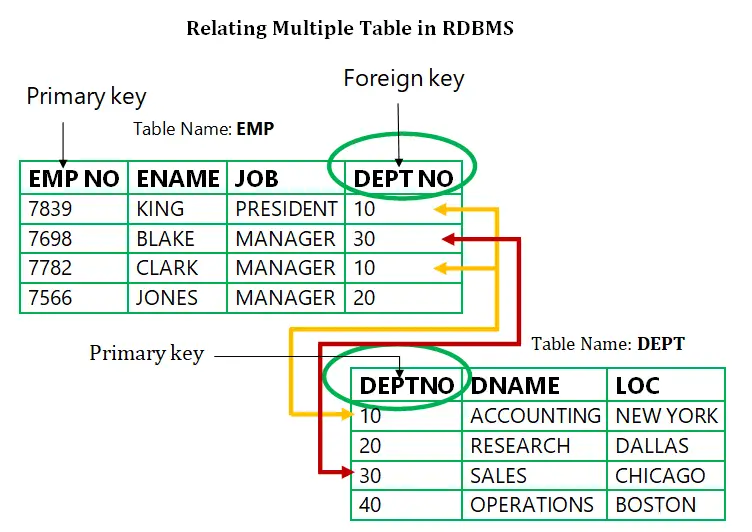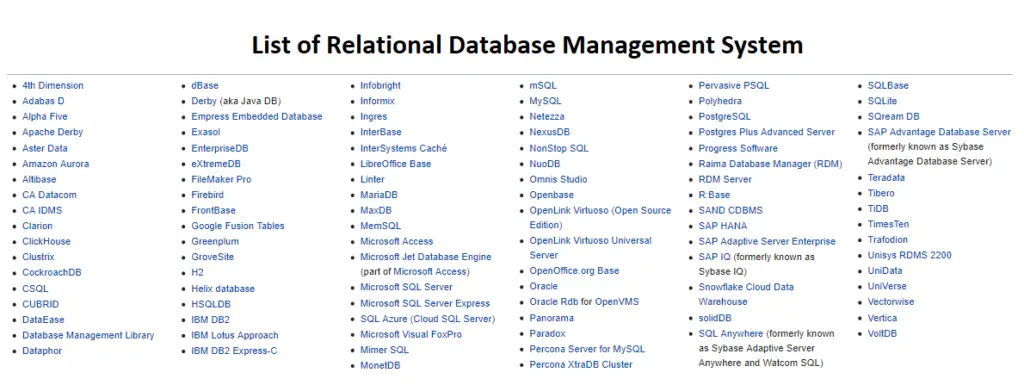What is RDBMS?
RDBMS stands for Relational Database Management System. It is, in fact, a software system that allows users to maintain relational databases. Here relational database is a database that based on the relational model for the database system. The principles of the relational model were declared by Dr. E F Codd in a June 1970 paper called “A Relational Model of Data for Large Shared Data Bank.” In this paper, Dr. Codd recommended the relational model with ‘Twelve Rules’ for database systems. These rules are the basis for the relational database management system (RDBMS).
In short, the relational model is one in which the following occurs.
• The fundamental pieces of data are relations.
• The operations upon those tables yield only relations.
Relational model requires two fundamental integrity rules. These are the entity integrity rule and the referential integrity rule.
- A primary key is a column or set of columns that uniquely identifies rows of a table. Sometimes, more than one column or set of columns can act as the primary key.
- A primary key that is made up of multiple columns is called a concatenated key, a compound key or, more often a composite key.
A foreign key is a column or set of columns in one table that exists as the primary key in another table. A foreign key in one table is said to reference the primary key of another table.
The entity integrity rule simply states that the primary key cannot be totally or partially empty, or null. The referential integrity rule simply states that a foreign key must either be null or match a currently existing value of the primary key that it references.

An RDBMS then is a DBMS that is built on the preceding foundation of the relational model and generally satisfies all the requirements of relational model.
So, if a DBMS can meet all the fundamental principles of relational model and Dr Codd’s twelve rules, it can be designed an RDBMS.
For a system to qualify as an RDBMS, that system must use its relational facilities exclusively to manage the database.
The features of RDBMS
- Built on the concept of relational database model and meet all the principles like two integrity rules, relational operations and twelve rules of E F Codd.
- Contains a collection of tables with relation.
- Maintain ACID properties in transaction like Atomicity, Consistency, Isolation, and Durability − to ensure accuracy, completeness, and data integrity.
- Ensure concurrent access. That means the system provides multi-user accessibility that can be controlled by individual users.
- Reduce data redundancy as a table is normalized in different minute tables.
- Use SQL as their primary or only query language. SQL also allows users to communicate with the server and permit data definition and data manipulation operations in RDBMS.
- Creates indexes for quicker data retrieval.
- Maintain various types of data integrity like (i) Entity Integrity; (ii) Domain Integrity; (iii) Referential Integrity; (iv) User-Defined Integrity.
- Provide facilities to build database application program.
- The security of data from all sides is ensured in RDBMS.
List of the top RDBMS software:
- Oracle.
- IBM DB2.
- Altibase.
- MySQL.
- Microsoft SQL Server.
- SAP Sybase ASE.
- Teradata.
- ADABAS.
- MS Access
- IBM Informix
- Microsoft Visual Foxpro
Also, there is a number of RDBMS software available in the world markets.A long list of relational database management systems from wikipedia.org is given as follows.

